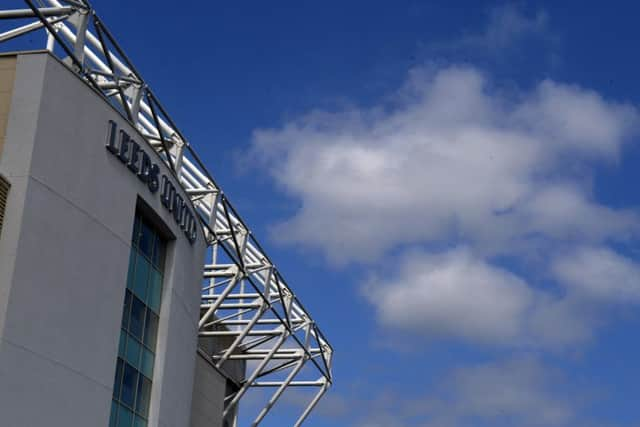Phil Hay: Leeds United hope new badge will stand for positive change - but can it survive the backlash?
and live on Freeview channel 276
Advertisement
Hide AdAdvertisement
Hide AdSome of those badges were synonymous with the best of times. Their most recent - the Peter Ridsdale Shield, for want of a better description - took in the Champions League exploits under David O’Leary but spent many more years identifying a club in decline or worse. When Leeds began canvassing supporters about the possibility of changing crests, one described the shield as an emblem of “20 years of mediocrity”. It is not quite true but not far off either.


That was one reason why the club and their owner, Andrea Radrizzani, decided to break from it. The new crest unveiled today, a caricature of the Leeds salute, will not become official until the end of this season and the timing of the announcement is as much to do with the fact that Kappa will begin producing United’s 2018-19 kit shortly. New kit means a high probability of leaks on social media and Leeds are aware that changing their crest is politically sensitive and deserving of a formal explanation. But they are leaving the shield behind. Before long it will be phased out of all branding at Elland Road.
Leeds had other issues with their existing crest. The use of the initials ‘LUFC’ and the absence of the words ‘Leeds United’ felt like poor marketing; a failure to properly display the club’s name. The white rose has always been popular, the essence of the badge Leeds wore at the height of the Howard Wilkinson era, but United saw it as generic to Yorkshire rather than distinct. The Leeds salute they liked, a habit with undefined origins but something no other club has ever tried to replicate. Angus Kinnear, Leeds’ chief executive, was oblivious to it when he first joined the board last summer. Since then he has found that supporters use it as a way of quietly acknowledging him at away games.
Leeds say they consulted more than 10,000 people and concluded that their supporters related to nothing more than the fanbase itself. Kinnear was previously involved in a change of badge at Arsenal, who are defined by their iconic cannon, and at West Ham United, where two hammers represent the iron work and ship-building heritage of what was their locality before the move to the London Stadium. At Elland Road, the Leeds salute seemed apt: tribal, individual and hard-edged. A representation a club who don’t lose sleep over popularity contests.
Advertisement
Hide AdAdvertisement
Hide AdThe move is bold and was likely, at best, to divide opinion, as new shirts do every summer, creating the natural split between those who like it, those who despise it and those in the middle who are largely indifferent. When the design dropped online today, opinion was unusually united: unanimous in condemning a style which is undeniably commercial, cartoon-esque in nature and almost American in its finish. A petition set up to ask Leeds to abandon it attracted almost 30,000 signatures within four hours. The club hoped that a positive change was what their new crest would come to stand for. The ferocity of the reaction begs the question of whether they can allow this badge to survive.